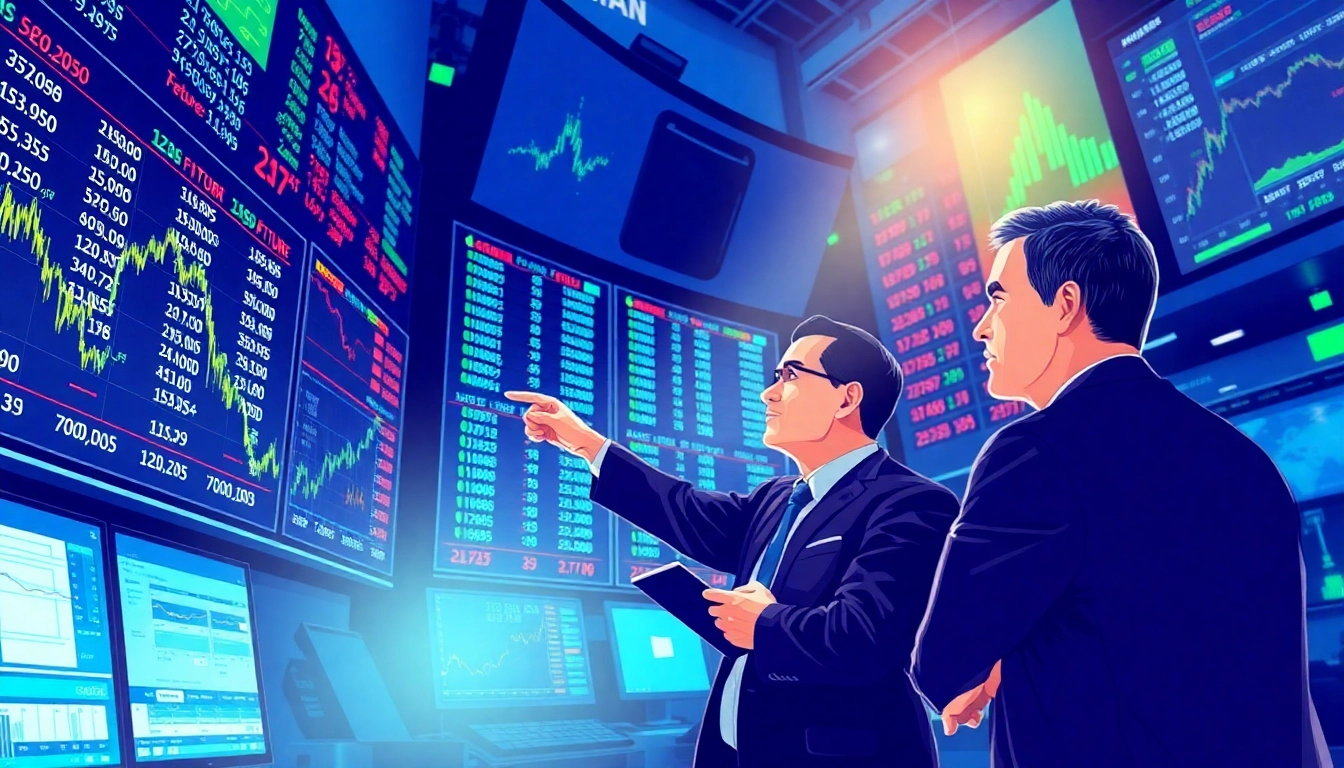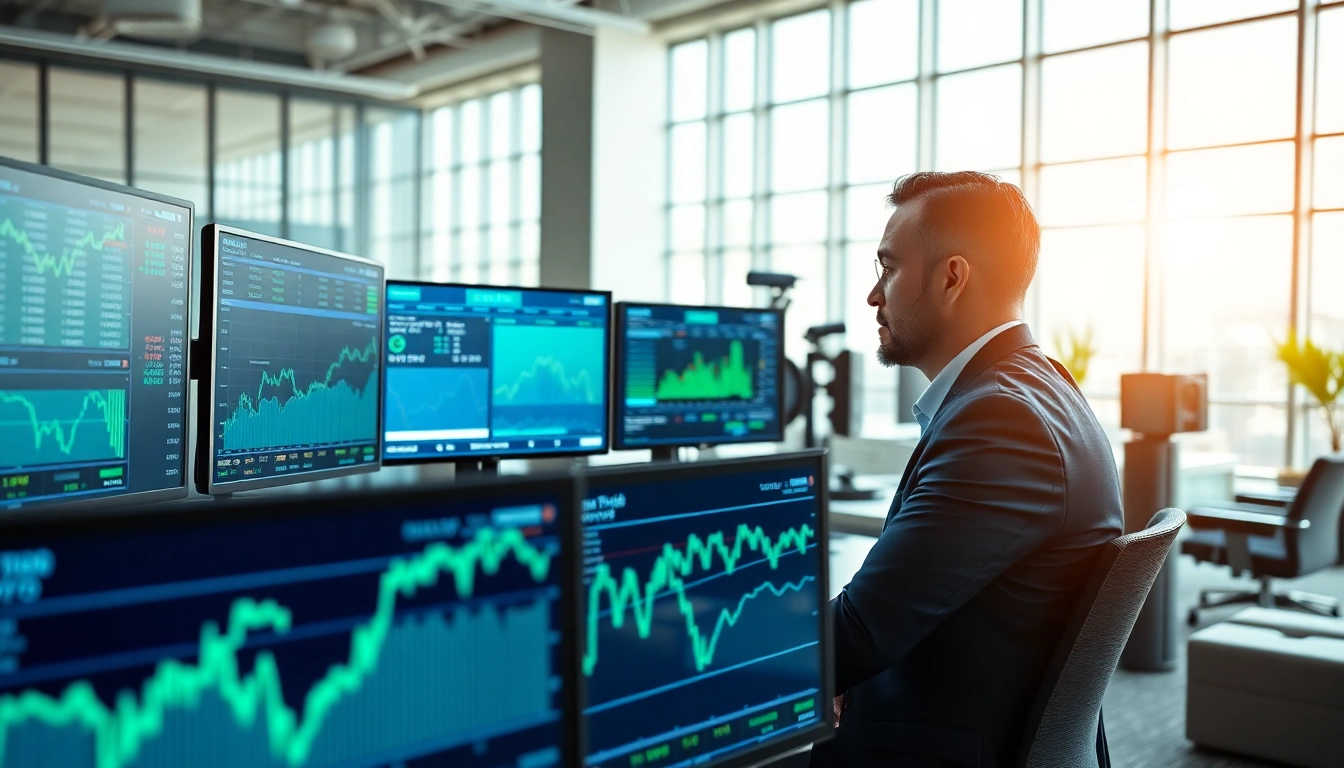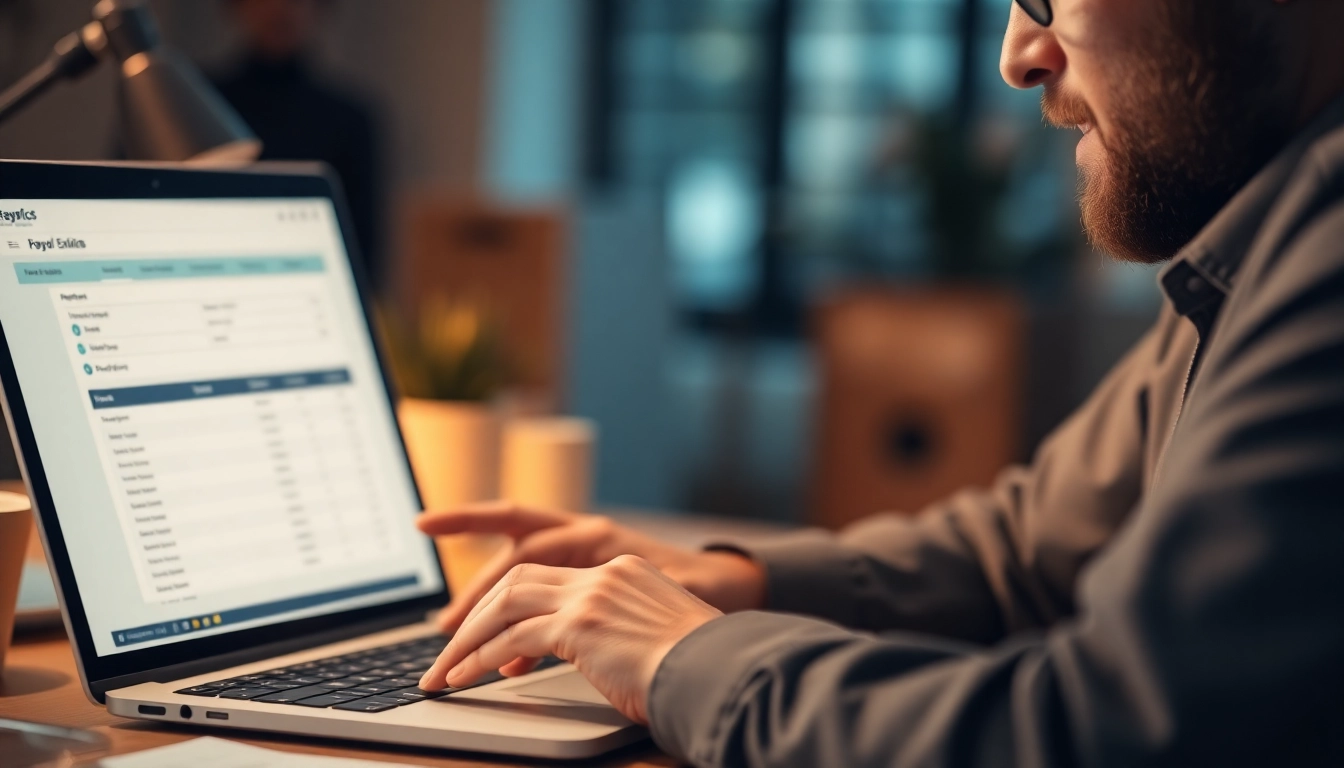Introduction to Trade Futures
In the rapidly evolving landscape of financial markets, understanding various investment instruments is essential for maximizing returns and managing risks. One such instrument that has gained significant popularity is trade futures. Futures trading is a nuanced domain that offers unique opportunities to investors, but it also demands rigorous understanding and strategy to navigate its complexities effectively. This article aims to demystify trade futures by exploring what they are, their mechanics, benefits, strategies, challenges, and essential steps to get started.
What Are Trade Futures?
Trade futures, commonly referred to simply as “futures,” are standard contracts that obligate the buyer to purchase, and the seller to sell, a specified asset at a predetermined price on a set future date. This asset can range from commodities—like oil, gold, or agricultural products—to financial instruments such as indices and currencies.
Futures contracts are categorized as derivatives because their value is derived from the underlying asset. These instruments not only serve to hedge risk but also facilitate speculation on the price movement of these assets. The significance of futures trading lies in its ability to standardize transactions that occur in well-defined exchanges, which adds a layer of security and fairness in trading.
How Futures Contracts Work
When trading futures, it is essential to understand the mechanics of contracts and how they operate. Each futures contract specifies the underlying asset, the contract size, the expiration date, and the price at which the asset will be exchanged.
Here’s a simple breakdown of how futures contracts work:
- Contract Specification: Each futures contract has specific details, such as the quantity of the underlying asset and settlement terms.
- Pricing: The price of a futures contract fluctuates based on market conditions. Traders can either buy (go long) if they expect the price to rise or sell (go short) if they predict a decline.
- Leverage: Futures trading allows participants to control a larger position with a smaller amount of capital through leverage. This magnifies both potential gains and risks.
- Settlement: Futures contracts can be settled in two ways: through physical delivery of the asset or through cash settlement where the cash difference is exchanged instead of the underlying asset.
Importance of Futures in Financial Markets
The role of futures in financial markets is multifaceted:
- Price Discovery: Futures markets assist in price discovery by providing traders with the current expectation of future prices.
- Hedging Mechanisms: They serve as a vital tool for businesses and investors to hedge against price fluctuations and manage risks associated with commodities and financial instruments.
- Liquidity: Futures markets are typically highly liquid, providing ample opportunities for trading and reducing transaction costs.
Benefits of Trading Futures
Leverage and Capital Efficiency in Trade Futures
One of the most alluring aspects of trading futures is the ability to utilize leverage. Traders can control a larger position with a relatively small amount of capital. For example, if a futures contract for oil is priced at $100, with a margin requirement of 10%, the trader needs to deposit only $10 to control that contract.
This can yield substantial returns on investment if the market moves favorably. However, it’s important to note that while leverage can amplify profits, it can also increase risk, leading to significant losses if the market moves against the trader’s position.
Diversifying Investment Portfolios
Futures trading offers a powerful tool for diversifying an investment portfolio. By including different asset classes such as commodities, bonds, or stock indices, investors can reduce overall portfolio risk while improving returns. This diversification helps mitigate losses during market downturns in specific sectors instead of the entire portfolio depreciating in value.
Hedging Strategies with Futures
Hedging using futures is fundamental for both individual investors and large institutions. For instance, a farmer might sell futures contracts for their crops to lock in prices, thus protecting against market declines. Similarly, investment managers may use futures contracts to hedge against declines in stock portfolios or other investments.
Hedging strategies effectively reduce risk exposure, offering peace of mind and more predictable cash flows.
Trade Futures: Essential Strategies
Technical Analysis for Futures Trading
Many traders rely on technical analysis when trading futures. This involves analyzing historical price movements and volume data to forecast future market behavior. Key tools and indicators include:
- Moving Averages: Smoothing out price data to identify trends.
- Relative Strength Index (RSI): A momentum indicator that measures the speed and change of price movements.
- Bollinger Bands: A volatility indicator that helps assess overbought or oversold conditions.
Using these tools, traders can make educated decisions on when to enter or exit trades, scaling their positions effectively based on market conditions.
Fundamental Analysis in Trade Futures
Beyond technical analysis, understanding the underlying fundamentals affecting asset prices is crucial. For instance:
- Commodity Futures: Prices can be influenced by supply and demand dynamics, geopolitical events, and environmental factors.
- Financial Futures: Economic indicators such as interest rates, employment figures, and inflation data can have significant impacts.
By analyzing these factors, traders can better anticipate market movements and adjust their trading strategies accordingly.
Risk Management Techniques
Effective risk management is critical in futures trading. Without it, traders can quickly find themselves facing significant losses. Here are some essential techniques:
- Stop-Loss Orders: Automatically exiting a position when it reaches a certain level of loss helps protect capital.
- Position Sizing: Determining the right proportion of capital to risk on each trade can help stabilize overall portfolio volatility.
- Diversification: Spreading investments across various asset classes can help mitigate risks inherent in individual investments.
Common Challenges in Futures Trading
Market Volatility and Its Impact
Market volatility is a significant challenge in futures trading. Prices can fluctuate wildly, influenced by factors like economic reports, geopolitical events, or sudden shifts in market sentiment. This unpredictability can sometimes lead to slippage—executing trades at prices that differ from expected levels. Traders must be prepared for these situations, using tools like automatic stop orders and volatility indicators to navigate them effectively.
Understanding Margin Requirements
Margin requirements in futures trading are essential but can be confusing for newcomers. Unlike stock trading, where full payment is required for purchases, futures contracts require only a margin deposit. While this creates opportunities, misjudging margin can lead to margin calls, forcing a trader to deposit additional funds or close positions. It is critical to understand how margin works and to monitor positions closely to avoid unwanted liquidations.
Emotional and Psychological Factors in Trading
Trading can evoke strong emotions, including fear and greed, which can cloud judgement. Overtrading, revenge trading, and emotional decision-making can lead to losses. Implementing a strict trading plan, staying disciplined, and using journals to monitor progress can help mitigate these psychological barriers. Regularly evaluating one’s emotional and mental state can empower traders to maintain a clearer focus on their trading strategies.
Getting Started with Trade Futures
Selecting a Futures Broker
Choosing the right futures broker is a critical step in getting started. Factors to consider include:
- Regulation: Ensure the broker is regulated by a recognized financial authority to safeguard your investments.
- Fees and Commissions: Analyze the fee structure to find a broker that aligns with your trading style and budget.
- Trading Platform: A user-friendly trading platform with advanced tools can enhance your trading experience.
Opening a Futures Trading Account
Once you have selected a broker, the next step involves the actual account setup:
- Application Process: Fill out an application form, which includes providing personal information and financial background.
- Documentation: Most brokers require identification documents and proof of address.
- Funding Your Account: After the account is approved, you can transfer funds to begin trading.
Practical Steps to Start Trading Futures
Here are actionable steps to kick-start your trading journey:
- Educate Yourself: Familiarize yourself with the basics of futures trading, market conditions, and current events influencing prices.
- Develop a Trading Plan: Outline your trading goals, risk tolerance, and strategies.
- Practice Trading: Use a demo account to test strategies without risking real money before moving to live trading.
Conclusion
Trading futures can be a rewarding yet challenging venture. With the right understanding, strategies, and tools, investors can harness the potential of futures contracts to diversify their portfolios, manage risks, and enhance potential returns. By taking a disciplined approach and continuously educating themselves, traders can navigate the complexities of the futures market successfully.








Leave a Reply